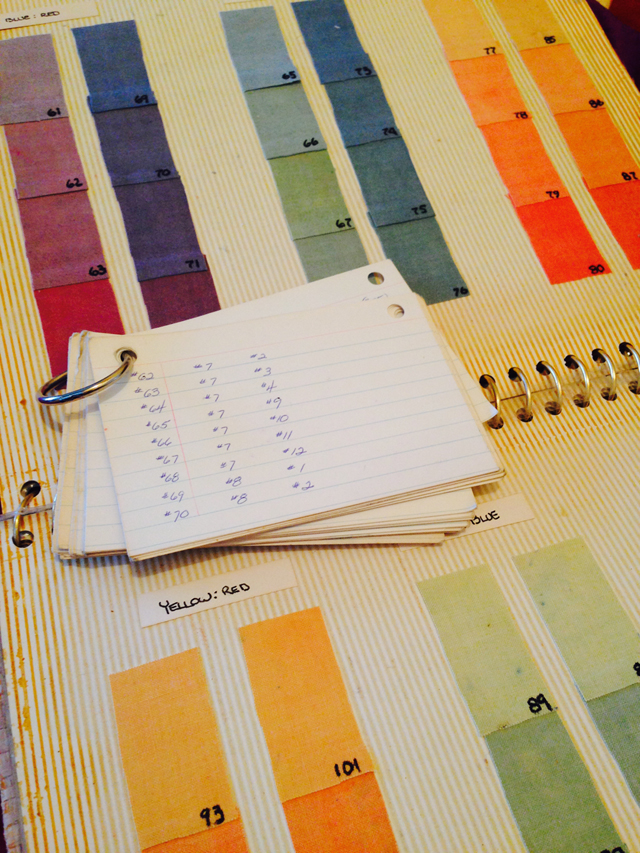 Forty years ago today, I finished my first color mixing collection.
Forty years ago today, I finished my first color mixing collection.
Home for three weeks between the end of my summer job and the beginning of my sophomore year of college, I decided to mix 300 colors using only three colors of RIT dye. Why dyes? Because my favorite art form at the time was making batiks.
I started with a twin sized white cotton bed sheet donated by my mom that I cut into twelve pieces. (Thanks Mom!) Each piece was dipped into one of the primary dye baths for a specific length of time then dried on a clothesline in the backyard. I cut each of those 12 pieces into smaller pieces which were dyed and dried a second time. Those pieces were then cut up and dyed a third time. By the time I was done, I had three hundred 1″ x 2″ swatches.
The primaries were scarlet red, golden yellow and cobalt blue in four depths of shade (values) based on time in the dye bath. From those I mixed 96 secondary colors. From those I mixed 192 tertiary colors. I kept track of the dye path for each piece on 3 x 5 index cards and carefully numbered them all before arranging them in one of those old spiral bound photo albums with sticky pages.
Looking back, I realize that my fascination with three primary mixing and mud colors started that fall. I ended up with dozens of little pieces that were the same color even though they were dyed in completely different orders. It turned out that there were many paths to one color. It was a huge color mixing “ah-ha” moment.
I came across the album while moving my color books into the VIA Artistica teaching studio that I share with three partners here in Portland. After 40 years the pages are yellowing, the labels falling off, and the colors have faded slightly – but the lessons learned are as vivid as ever.

Tertiary Colors showing the order of the dye baths. The numbers in parentheses are the secondary colors in the color path.
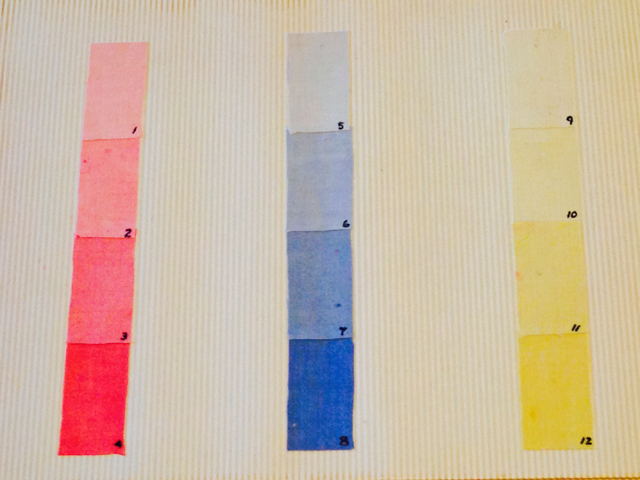
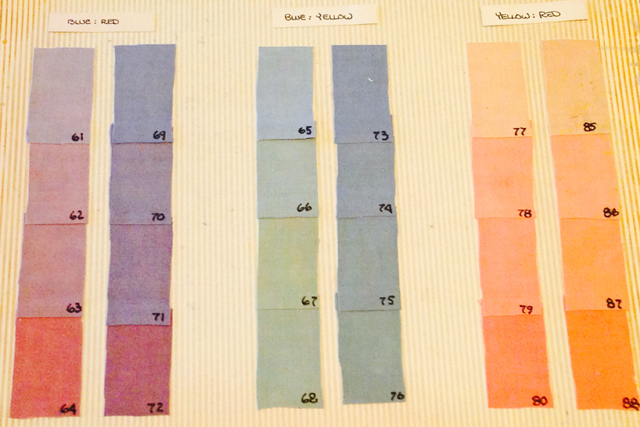
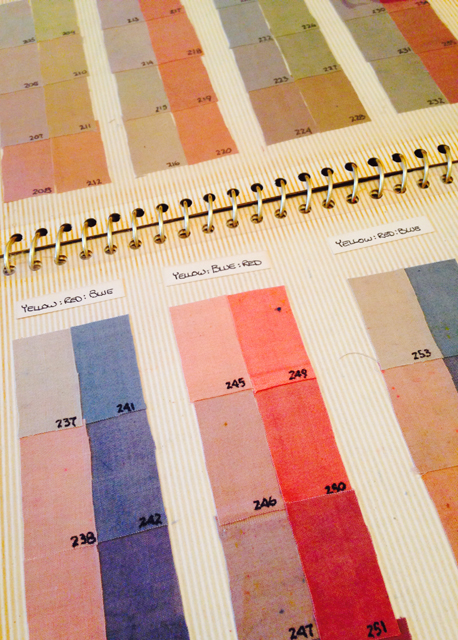
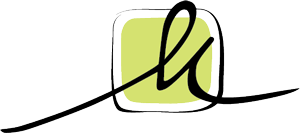
September 16, 2015 at 3:40 pm
Hi Patrick – Note that at the time I was still using red, yellow, blue primaries. If I was to do it all again I would use cyan, magenta and yellow. In Procion I like Lemon Yellow, Fuchsia, and Cerulean -instead of the Turquoise that Dharma recommends – as a modern mixing set.
As best as I can remember from that long ago, here’s what I did . . .
I cut an old cotton double size sheet into 12 pieces and put four pieces into each dye bath. I pulled them out at regular intervals. I can’t remember how long each interval lasted – sorry!- but I ended up with a range in the depth of shade from light to dark. Then I cut each of those pieces into nine pieces. (That makes 108 pieces!) I labeled and saved one of each variation and then put four of each variation into each of the other two primaries (for instance all the reds were divided into two sets – one set went in the blue bath and the other in the yellow bath) and pulled those out at two intervals – I remember the first was just a few minutes, the other pieces stayed in for a long time. I divided those pieces into three pieces. I labeled and saved one piece and put the other two into the remaining dye bath and pulled them out again at short and long intervals. After labeling them – I cut out 1″ x 2″ sections from each piece and stuck them in the album. I still have it on my shelf!
You’ve triggered my curiosity. I will try to duplicate the process when I get back from Australia. Might not be until January but it would make a fun rainy winter in Portland project.
September 16, 2015 at 3:11 pm
impressive
so if I understand what you did was to dye 2nd piece 2 times 3rd 3times so that by the end the finial piece was died multiple times. let me know Patrick